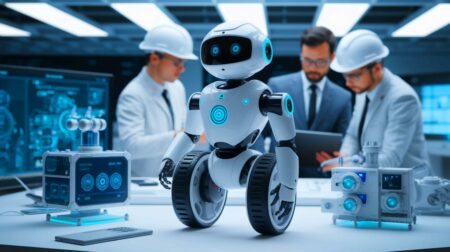[LIVEBLOG] The Connected Conference, the first international conference dedicated to the Internet of Things, welcomes Luc Julia – VP of Innovation at the Samsung Innovation Center – today in Paris to talk about the launch of SAMI – Samsug Architecture Multimodal Interactions.
After his work on Siri, M. Julia has now been implementing Samsung Architecture Multimodal Interactions for 18 months: a place where you can play around with data. Luc Julia started his intervention by stating a very simple and straight to the point definition of the Internet of Things: “It’s all about Data”, and more precisely, collecting, transporting and massaging the data.
Collecting Data:
Data collection tools today are specialized in a certain kind of data collection (continuous or discrete…). SAMI’s advantage is that it is capable of collecting any kind of data, real-time or historical, from any kind of device, even the ones that do not exist yet.
The amount of data collected creates the challenge of data storage. We don’t know how many connected objects there will be in 2020: some say 50B, 100B, 120B? What we know for sure is that it’s going to be big.
According to Luc Julia, this number will be 1.5 trillion. Why this number? He did a simple calculation. In his home, he has 150 connected devices. His sister has 2 devices connected to the web: her phone and her computer. The difference is a factor of 75. In this scenario, he is 2020, she is today. Today, 20B devices are connected to the Internet. If we multiply this number by a factor of 75, you get 1,5 trillion.
Transporting data
Today, many different networks exist, improving every day: 3G, 4G,XG, Wifi, Bluetooth, etc. A Wifi router is supposed to connect a lot of objects, yet in reality if you manage to connect 25, you’re lucky. Luc Julia states that these networks won’t be enough for the amount of connected objects we’re going to be using daily.
Therefore, the big battle today is standardization of networks, summed up by his sentence: “Downstairs is hell, Upstairs is Paradise”. Downstairs, objets can’t communicate with each other because they don’t emit the same signal.
IoT actors are trying to implement standardization downstairs: it will fail because it requires too much work to work with pipes – one has to install new firmware, new sensors etc..
Upstairs is paradise: when the data goes to the cloud, it’s “all white and fluffy”! There are no pipes, there are only different formats, which is very easy to fix.
Massaging data
Once the data is all in one place, some “brains” are needed do cross silos fertilization, using machine learning and analytics.
Luc Julia uses the example of two devices he uses daily: Fitbit and Nest. Now, they do not communicate to each other. The first tracks his fitness, the other is a home thermostat. If they could communicate, his thermostat would be able to know if he comes home from a run, therefore he wouldn’t need to have such a warm home, since he’s feeling hot.
Maybe this example seems like a detail, though it can be applied to other fields, such as medicine. PhysIQ ran a study with University of Chicago on 15 heart failure patients, monitored a few times a weeks. The tool was able to indicate potential issues up to 8 days before the patients felt the symptoms.
These examples raise the issue of privacy: according to M. Julia, SAMI is like a bank: it stores and secures the data, while it is still yours.
The results of data being collected, transported and “brained” well thanks to SAMI, according to Luc Julia, is an improved wellness, a smarter home and a car.
Did you like it? 4.6/5 (20)








